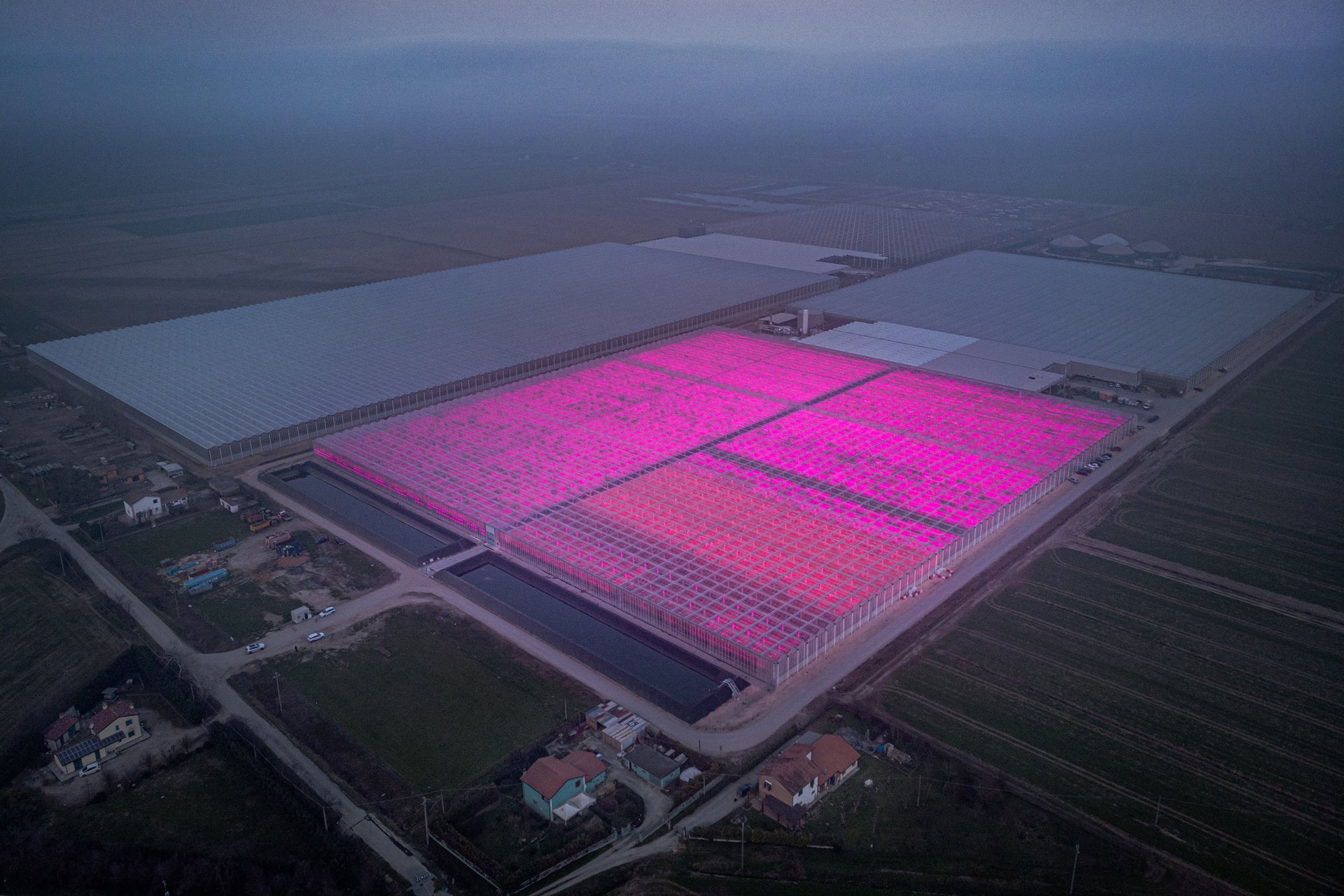Greenhouse operations in this facility in Ostellato, Italy, are based on a circular economy. At the end of their life cycle, plants become the fuel for a biogas plant that powers the greenhouse. Hydroponic techniques (cultivation in a water-based solution of nutrients, rather than soil) enable plant growth all year round, using 70 percent less water than traditional methods. In addition, rainwater is collected for irrigation.
This project documents different technologies that offer possible routes of transition to a net-zero economy. The photographer visited innovative facilities across Europe, from Iceland to Italy, from 2020 to 2022.
Human-induced climate change is the largest, most pervasive threat to the natural environment and society that the world has ever experienced, according to the UN Human Rights Office, OHCHR. This prompted the European Union to establish targets to cut greenhouse emissions by at least 55 percent by 2030 and to reduce them to net-zero by 2050. European companies seeking ways to achieve these goals are exploring renewable energies, new technologies for food production, and the circular economy as potential ways forward.

